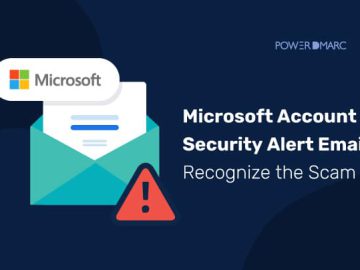If you’re looking to attract and convert new leads, email marketing remains one of the most effective strategies available. It allows you to connect with your audience through automated, personalized content, making it both efficient and cost-effective. In fact, 77% of marketers have reported increased email engagement over the past year and for every $1 spent, $36 of ROI was generated.
The good news? Setting up email marketing automation is easier than you might think, especially with the help of one of the best email marketing software tools for small businesses. Once you grasp the basics, you’ll be ready to deliver powerful, targeted messages to your customers.
Editor’s note: Looking for the right email marketing solution for your business? Fill out the below questionnaire to have our vendor partners contact you about your needs.
What is email marketing automation?
Email marketing involves sending targeted emails to groups of your subscribers. This could be a weekly newsletter, information about your products or services, or just general information about your company.
With email marketing automation, these emails are sent without your constant involvement. You set up automatic workflows, and when a customer signs up for a free lead magnet or makes a purchase, they will receive an email or a series of emails.
Email marketing automation allows you to continue building a relationship with your subscribers over time. When you plan your campaign, you’ll decide who it targets and your campaign’s purpose.
From there, you’ll decide how many emails to include and how frequently your customers will receive these emails. Once you schedule your campaign, the emails will be delivered automatically.
Email automation is just one marketing automation software feature. Other features include social media, text message and web marketing, and tracking and customer engagement functions.
Benefits of email marketing automation
These are some of the most significant email marketing benefits that going digital provides.
Reclaims your time
One of the biggest benefits of email marketing automation is the time it saves you. When you reach a certain point in your business, sending out emails manually is no longer possible.
Email marketing automation allows you to scale your marketing efforts. You can triple your reach without tripling the amount of effort you put into it.
Improves the customer experience
Email marketing automation isn’t just more convenient for you – it also delivers a better experience to your customers. This is because your customers’ behavior determines the type of emails they receive.
For instance, a website visitor may want to learn more about your company, but they may not be ready to have a salesperson reach out to them. So they sign up for a free guide and receive a welcome email.
That subscriber receives valuable and relevant information, and you continue building the relationship until they’re ready to move to the next step. Thanks to email marketing automation, you’re able to send information that’s personalized to their specific needs.
Increases revenue
Data repeatedly shows that email marketing results in more revenue for your business. By sending targeted, timely emails to your subscribers, you increase the likelihood of converting them to a customer.
For instance, marketers who used segmented campaigns saw a 760% increase in revenue, and 30% of marketers claim email is their highest source of ROI.
Boosts knowledge
Another benefit is that email marketing helps you learn more about your subscribers. You’ll discover the types of emails they prefer, what subject lines prompt them to open it and the type of products in which they’re interested.
As you track your email marketing campaigns, you’ll gain more insight into your audience. This information will help you create successful future marketing campaigns.
How to automate your emails
Here are the five steps you’ll take to begin automating your emails:
1. Choose your email marketing software
Email marketing software helps businesses design, send, and manage email campaigns to their customers and prospects. It streamlines the process by offering templates, personalization options, and analytics to track performance. One of the key features of email marketing software is email automation. This feature allows businesses to send targeted emails based on specific triggers or customer behaviors, such as a welcome email series for new subscribers or follow-up emails after a purchase. Email automation ensures timely, relevant communication, enhancing customer engagement and reducing the manual effort required to manage email marketing efforts.
After choosing your business’s email marketing software, the next step is to look into how to successfully implement a CRM system and learn how to use your CRM for customer service.
2. Create a welcome sequence
Once you’ve chosen an email provider, you need to set up a welcome sequence for new subscribers. A welcome sequence is a series of emails that new subscribers will receive after they sign up. This ensures you’re creating a good first impression with your recipients.
The content and number of emails you send will depend on your personal preferences. But the main objective of a welcome sequence is to thank your subscribers for signing up and invite them to connect with you on other platforms.
If you’re looking to implement triggered emails for your business, read our Salesforce Marketing Cloud review.
3. Segment your list
As you begin collecting more information about your audience, you’ll start segmenting potential customers into different lists. By segmenting your subscribers based on their industry, location, and how they found you, you’ll be able to deliver more personalized emails.
4. Split-test your emails
When you first start email marketing, it’ll take some time to figure out what resonates with your audience. One of the best email marketing tips is split-testing your emails.
In A/B testing, you send slightly different versions of the same email to different groups of subscribers. For instance, you may send the same email but test out two different subject lines, or you may try out a different call to action (CTA) to see which one is the most effective. Over time, you’ll begin to gather information that will help you create better campaigns.
5. Track the results of your campaign
Anytime you start a new email marketing campaign, you want to track your results to see if your campaign was successful. You’ll want to check these key performance indicators (KPIs):
- Delivery rate: Your delivery rate is the percentage of emails you send that ends up in your subscribers’ inboxes. Your email delivery rate should be at least 85 percent to 95 percent. If it’s lower than that, you’ll want to contact your web host to figure out why.
- Open rate: Your open rate is the percentage of users who received your email and actually opened it. If your open rate is on the low side, this could indicate your subject lines need some work.
- Click-through rate: Of the subscribers who opened your email, how many of them took the action you wanted them to take? This is known as the click-through rate, and it’s an excellent way to gauge how engaging your emails are.
Check out our guide to choosing the right email marketing service for your business. Determine your needs and find the right partner for your business.
Best practices for using automated emails
Email marketing automation will save you time and money, but it will take some effort on your part to achieve success. Here are a few best practices to keep in mind as you move forward:
- Always include a CTA: Every email should have a call to action. However, this doesn’t mean you should always try to get your subscribers to buy something. In fact, selling too hard is one of the most common email marketing mistakes. Often, the CTA could be something simple, like checking out a recent blog post you wrote or following your company on X (formerly Twitter).
- Follow anti-spam laws: Make sure you comply with the FTC’s anti-spam laws for commercial email. These rules require you provide your name and address at the end of every email, and give subscribers a way to opt out of future emails. If you violate the CAN-SPAM Act, you could get hit with hefty fines.
- Make sure emails are optimized for mobile: Did you know that 80 percent of people check their email on mobile devices? For that reason, every email you send must be optimized for mobile devices.
- Be consistent: Consistency is one of the most important aspects of email marketing success. It’s OK if you can’t build complex email sequences from day one, but you should at least send out a weekly newsletter. This lets your subscribers know what to expect and helps you build a relationship with them.
Elevate your marketing with automation
Email marketing automation is a powerful tool to transform your marketing efforts, making it easier to engage and convert leads while saving time and resources. By leveraging automated workflows, targeted messaging and personalized content, you can build stronger relationships with your customers and significantly boost your ROI. Start today by selecting the right email marketing software and watch your business grow with every automated send.




